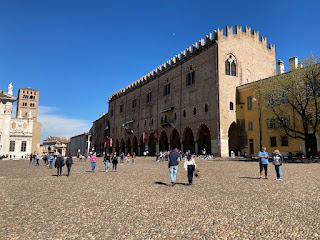Vittorio Pozzo - double World Cup winner
Manager led Azzurri to victory in 1934 and 1938
Vittorio Pozzo, the most successful manager in the history of Italy's national football team, was born on this day in 1886 in Turin. Under Pozzo's guidance, the Azzurri won the FIFA World Cups of 1934 and 1938 as well as the Olympic football tournament in 1936. He also led them to the Central European International Cup, the forerunner of the European championships, in 1931 and 1935. No other coach in football history has won the World Cup twice. Pozzo managed some outstanding players, such as Internazionale's Giuseppe Meazza and the Juventus defender Pietro Rava, but his reputation was tarnished by the success of his team coinciding with the Fascist regime's tight grip on power. Italy's success on the football field was exploited ruthlessly as a propaganda vehicle. While not a Fascist himself, Pozzo upset many opponents of Mussolini across Europe at the 1938 World Cup in France when his players gave the so-called 'Roman' salute - the extended right-arm salute adopted by the Fascists - during the playing of the Italian anthem. Read more…
________________________________________
Pope Pius XII
Pope elected on 63rd birthday to lead the church during the war
Cardinal Eugenio Pacelli was elected Pope and took the name of Pius XII on this day in 1939, his 63rd birthday. A pre-war critic of the Nazis, Pius XII expressed dismay at the invasion of Poland by Germany later that year. But the Vatican remained officially neutral during the Second World War and Pius XII was later criticised by some people for his perceived silence over the fate of the Jews. Pope Pius XII was born Eugenio Maria Giuseppe Giovanni Pacelli on March 2, 1876 in Rome. His family had a history of links with the papacy and he was educated at a school that had formerly been the Collegio Romano, a Jesuit College in Rome. He went on to study theology and became ordained as a priest. He was appointed nuncio to Bavaria in 1917 and tried to convey the papal initiative to end the First World War to the German authorities without success. After the war he worked to try to alleviate distress in Germany and to build diplomatic relations between the Vatican and the Soviet Union. He was made a Cardinal priest in 1929 and elected Pope on March 2, 1939. When war broke out again he had to follow the strict Vatican policy of neutrality. Read more…
__________________________________________
Pietro Novelli – painter and architect
Sicilian great who was killed in Palermo riot
Pietro Novelli, recognised as the most important artist in 17th century Sicily, was born on this day in 1603 in Monreale, a town about 10km (6 miles) from Palermo. A prolific painter, his works can be seen in many churches and galleries in Sicily, in particular in Palermo. There are good examples of his work outside the city, too, for example at Piana degli Albanesi, about 30km (19 miles) from Palermo, where he painted a fresco cycle in the cathedral of San Demetrio Megalomartire and another fresco, entitled Annunciation, in the church of Santissima Annunziata. At his peak, wealthy and aristocratic members of Sicilian society, as well as monasteries and churches, competed to be in possession of a Novelli work. His father, also called Pietro, was a respected artist who also worked with mosaics and Pietro initially worked in his father’s workshop in Monreale. A great student of art who travelled extensively, among his major influences were Caravaggio, whose work in Sicily he studied, particularly his Adoration of the Shepherds, which was commissioned for the Capuchin Franciscans and was painted in Messina for the Church of Santa Maria degli Angeli. Read more…
_______________________________________
Book of the Day: Winning at All Costs: A Scandalous History of Italian Soccer, by John Foot
The 2006 World Cup final between Italy and France was a down-and-dirty game, marred by French superstar Zidane's head-butting of Italian defender Materazzi. But viewers were also exposed to the poetry, force, and excellence of the Italian game as operatic as Verdi and as cunning as Machiavelli, it seemed to open a window into the Italian soul. John Foot's epic history shows what makes Italian soccer so unique. Mixing serious analysis and comic storytelling, Foot describes its humble origins in northern Italy in the 1890s to its present day incarnation where soccer is the national civic religion. A story that is reminiscent of Gangs of New York and A Clockwork Orange, Foot shows how the Italian game, like its political culture , has been overshadowed by big business, violence, conspiracy, and tragedy, how demagogues like Benito Mussolini and Silvio Berlusconi have used the game to further their own political ambitions. But Winning at All Costs also celebrates the sweet moments , the four World Cup victories, the success of Juventus, Inter Milan, AC Milan, the role soccer played in the resistance to Nazism, and the great managers and players who show that Italian soccer is as irresistible as Italy itself.John Foot graduated from Oxford University with a degree in philosophy, politics and economics in 1986 and gained his doctorate from Cambridge University, submitting a thesis on the socialist movements in Milan between 1914 and 1921. He has lectured at a number of universities and is currently Professor of Modern Italian History at the University of Bristol. He has written a number of books on Italian politics, history and sport.
%20(1).jpg)











.jpg)


.jpg)

.jpg)



